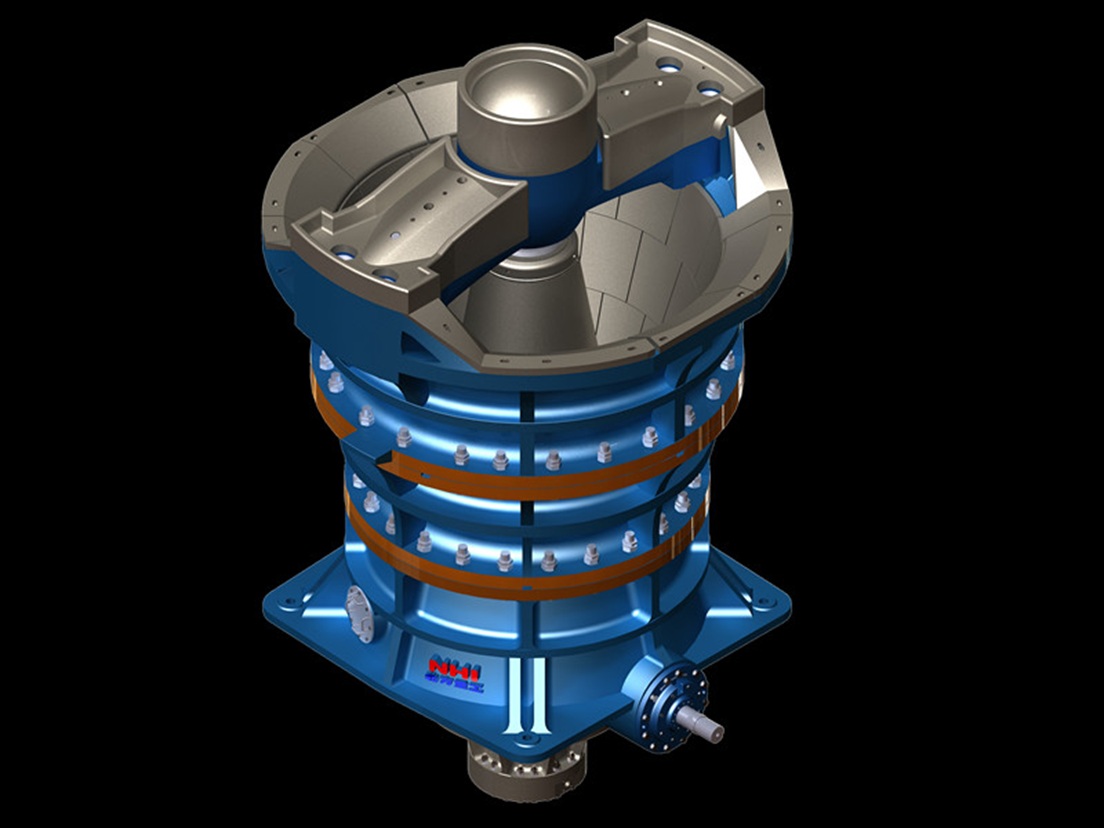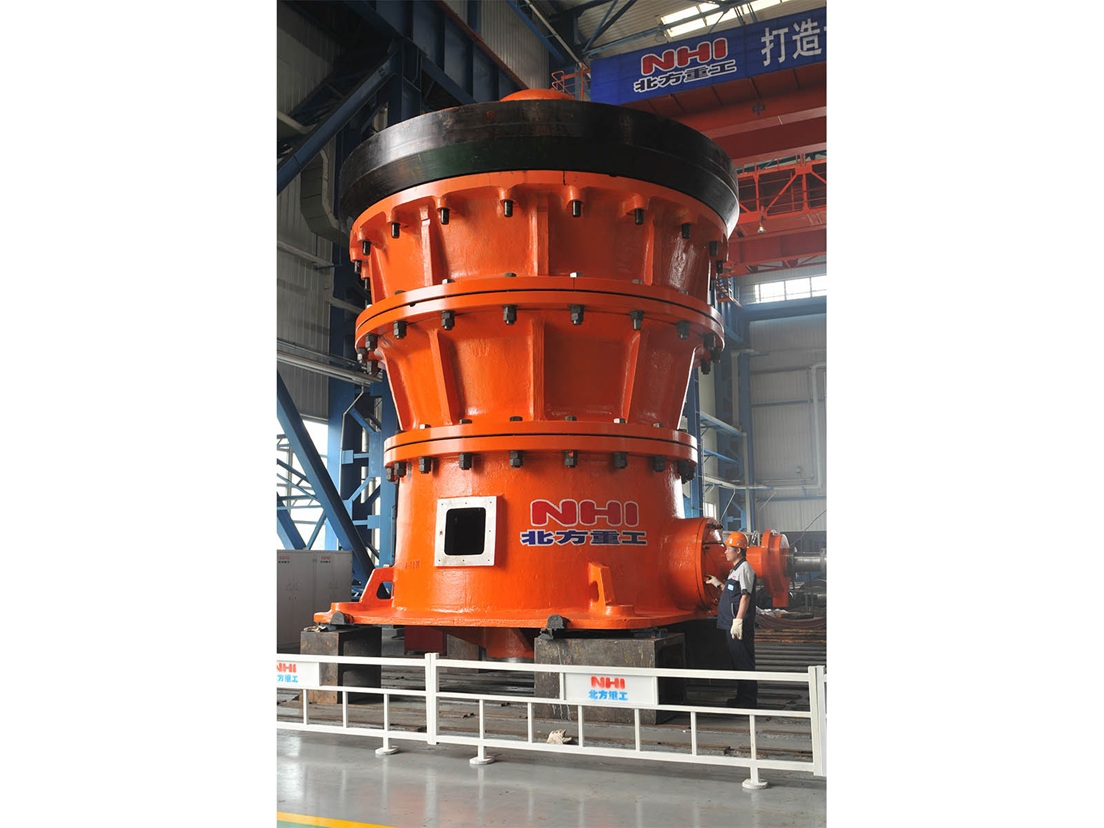
You use a gyratory crusher to break big rocks into small pieces. This machine has a crushing head that spins inside a bowl. It works well with hard materials and gives good results.
The gyratory crusher has a spinning crushing head inside a bowl. The bowl stays in one place and is attached to the frame. The crushing head sits on a short, strong shaft. The shaft hangs from the spider with a nut. A dust seal keeps grit and dust away from the driving parts. The main shaft spins and moves the crushing head. This helps crush rocks well as the head moves. It works better than other crushers.
You use gyratory cone crushers in many plants because they handle lots of material and tough jobs easily.
The mantle moves in a special way inside the bowl. It spins in a path that is not straight. This makes the space between the mantle and bowl change. Rocks come in from the top. The mantle pushes the rocks against the bowl. The rocks break as the space gets smaller.
The mantle spins and presses rocks on the bowl.
The changing space crushes big rocks into small ones.
This way, you get smaller and even pieces compared to other crushers.
Gyratory crushers are good when you need to crush a lot of rocks fast. They use strong squeezing forces to break the rocks. The mantle moves and pushes rocks on the concave liners. The concave liners do not move and help crush the rocks. The way the mantle moves and the gap changes makes the crushing work. This helps crush hard rocks with less wasted energy.
A gyratory crusher has many main parts that work together:
Mantle: This part gets hit by rocks first. It crushes rocks on the concave.
Concave: The concave does not move and forms the outside for crushing.
Spider: The spider holds up the top of the main shaft and spreads out the weight.
Base: The base holds the drive parts and supports the hydraulic system.
Frame: The frame gives the crusher its shape and keeps it strong.
Gears: The gears turn the main shaft and move the mantle.
Hydraulic System: This system lets you change settings and keeps the crusher safe from too much load.
Lubrication System: This system lowers rubbing and helps the crusher last longer.
Note: The lubrication system is very important. It keeps the moving parts working well and stops damage.
Each part’s design changes how the crusher works. The mantle mostly moves at the bottom. The concave stays in one place. The shaft is set at a bigger angle in a gyratory rock crusher. This helps the hammering action. You can change the product size by moving the open side of the mantle.
To start a gyratory crusher, follow the manual steps. First, let the crusher warm up. Listen for odd sounds or shaking. When ready, put rocks in the top. The mantle spins and crushes the rocks as they go down.
The hydraulic system helps you change the crusher easily. You can turn the bowl to move the concave. This helps the liners wear out evenly. You can also raise or lower the main shaft to change the closed side setting while the crusher runs. This lets you control the crusher right away and keeps it safe from too much load.
|
Adjustment Method |
Description |
Benefits |
|---|---|---|
|
Rotating the bowl against the threads |
Moves the outer wear part (concave) up or down |
Liners wear out more evenly |
|
Lifting/lowering the main shaft |
Changes the closed side setting while working |
Lets you adjust quickly and keeps crusher safe |
New gyratory crushers have safety features. The hydraulic system opens the crusher if something blocks it. The overload relief keeps the parts safe from damage. You can change settings with buttons, so you do not need to use shims by hand.
Tip: Always follow the maker’s shutdown steps. Let the crusher cool before doing any maintenance.
The working principle of a gyratory crusher helps you get good results in many jobs. The design gives you high capacity, saves energy, and crushes hard rocks well.

Gyratory crushers are used in many big industries. They work best in mining and quarrying. People use them first to break large, hard rocks. These machines can handle tough jobs and crush things like granite and ores. Mining and aggregate companies need strong machines with high capacity, so they use gyratory crushers.
Here is a table that shows where these crushers are used and what they crush:
|
Industry |
Materials Processed |
|---|---|
|
Mining |
Granite, ores |
|
Quarrying |
Hard materials |
You see gyratory crushers where lots of hard material needs crushing fast. These machines help finish big projects on time.
High-efficiency gyratory crushers are used in several main ways:
Mining sites use them to crush ore before other steps.
Quarries use them to break hard rock for building.
Big aggregate plants use them for jobs needing lots of crushing.
People pick them for hard rock because they handle tough, rough materials.
Gyratory crushers are great when you need to crush a lot at once. In mining, you put big pieces of ore into the crusher. The machine breaks them down so you can move and use the material. In quarries, you use a gyratory crusher to make smaller stones for roads and buildings.
You often choose a gyratory crusher instead of a jaw crusher for bigger rocks or more output. Gyratory crushers can take larger pieces and give a steady product. They also work well when you need a constant flow of material. Jaw crushers use less energy, but they cannot match the high capacity of a gyratory crusher in big jobs.
Note: Gyratory crushers save time and effort on large projects. They keep your work going by crushing lots of material without stopping.
There are many good things about using a gyratory crusher. Here is a table that shows the main advantages:
|
Advantage |
Description |
|---|---|
|
High Output Volume |
Can crush up to 5000 tons per hour, good for big jobs. |
|
Consistent Product |
Makes even sizes, which is needed for some jobs. |
|
Energy Efficiency |
Uses energy well, so costs stay low. |
|
Continuous Operation |
Runs without stopping often, handles big loads easily. |
|
Higher Crushing Ratio |
Deeper chamber means better crushing and more finished product each time. |
|
Direct Feeding |
You can put material straight in, no extra tools needed. |
Gyratory crushers give you a lot for your money. Their design helps make better-shaped stones, which is important for building. The special opening helps stop flat pieces, so you get better stones. If you work with thin stone, the shape of the opening helps more than a jaw crusher.
Gyratory crushers help you work faster. You can crush more in less time. Automation and hydraulic systems make it easy to change settings and keep the machine working. This means less time fixing and lower costs.
Tip: If you need to crush hard, rough materials in big jobs, a gyratory crusher works best.
The way gyratory crushers work makes them good for tough jobs. They handle big rocks, give high output, and help you work better. If you work in mining or big aggregate plants, you get many benefits from using a gyratory crusher for your main crushing work.
You keep your gyratory crusher working by following a plan. Start with regular checks. Look for cracks or worn parts. Watch for rust too. Check the lubrication system every day. Clean oil helps moving parts last longer. Good lubrication also saves energy. You should watch for vibration. This helps you find problems early.
Here is a table to help you with maintenance:
|
Maintenance Practice |
Description |
|---|---|
|
Regular Inspections |
Look for wear, cracks, and rust on all parts. |
|
Lubrication Practices |
Keep oil levels right and change oil every year. |
|
Vibration Monitoring |
Use tools to find problems early. |
|
Belt Alignment |
Adjust belts to stop extra wear. |
|
Replace Worn Parts |
Change liners and bushings as soon as they wear out. |
|
Use High-Quality Lubricants |
Always use the oil the maker says to use. |
Tip: Check spider bushing clearance once a month. Watch bushing lubrication every day. Look at balance cylinders every 30 days.
You may have some problems with gyratory crushers. If you do not install parts right, you get more friction. This makes parts wear out faster. Problems with the lubrication system can let dirt in the oil. Dirty oil wears out moving parts quickly. Overloading or missing checks can make parts break early.
|
Issue Type |
Description |
|---|---|
|
Insufficient Installation Precision |
Bad fit causes more friction and faster wear. |
|
Lubrication System Problems |
Dirty oil hurts moving parts. |
|
Improper Operation and Maintenance |
Too much load and missed checks break parts early. |
Unplanned downtime can happen for many reasons. It can be from broken parts, mistakes, power loss, worn parts, tough rocks, or bad weather.
You can help your gyratory crusher last longer by doing these things:
Check your crusher every 200 hours.
Look at wear patterns each month and change how you use the machine.
Pick strong wear parts for hard rocks.
Lubricate moving parts every 100 hours.
Train your team two times a year on how to use and care for the crusher.
Taking care of your crusher often means fewer problems and longer life. Gyratory crushers need less maintenance than jaw crushers because of their design. This helps you do big jobs and crush tough rocks with less stopping.
Note: Good care keeps your gyratory crusher ready for any hard rock job.
You use a gyratory crusher to break big rocks. The mantle moves while the concave stays still. This setup lets the crusher handle lots of rocks. It also uses less energy to do the job. Gyratory crushers are found in mining and other tough jobs. They work well with hard materials. If you take care of your crusher, it stays safe and works better.
If you know how a gyratory crusher works and keep up with care, you use less energy and get good results.
|
Maintenance Task |
How Often |
|---|---|
|
Check lubrication levels |
Daily |
|
Inspect spider bushing clearance |
Monthly |
|
Change oil |
Yearly |
Watch for worn parts and keep your crusher ready for work.